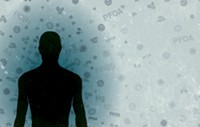Advertisement
Grab your lab coat. Let's get started
Welcome!
Welcome!
Create an account below to get 6 C&EN articles per month, receive newsletters and more - all free.
It seems this is your first time logging in online. Please enter the following information to continue.
As an ACS member you automatically get access to this site. All we need is few more details to create your reading experience.
Not you? Sign in with a different account.
Not you? Sign in with a different account.
ERROR 1
ERROR 1
ERROR 2
ERROR 2
ERROR 2
ERROR 2
ERROR 2
Password and Confirm password must match.
If you have an ACS member number, please enter it here so we can link this account to your membership. (optional)
ERROR 2
ACS values your privacy. By submitting your information, you are gaining access to C&EN and subscribing to our weekly newsletter. We use the information you provide to make your reading experience better, and we will never sell your data to third party members.
Biological Chemistry
Epigenetic Clues To Arsenic Toxicity
Newly identified tumor-suppressor genes could help unravel how long-term arsenic exposure leads to diseases
by Stephen K. Ritter
February 21, 2011
| A version of this story appeared in
Volume 89, Issue 8
Long-term exposure to low levels of arsenic in drinking water—a public health problem affecting tens of millions of people globally—is associated with an increased incidence of heart disease, diabetes, and cancer. Studies on arsenic poisoning have identified epigenetic changes such as altered DNA methylation as a probable cause of these health effects, but it’s still unclear whether multiple genes and pathways are affected. Toxicologists led by Rebecca C. Fry of the University of North Carolina, Chapel Hill, now report the first study to examine genomewide, site-specific DNA methylation in people with ongoing exposure to arsenic (Chem. Res. Toxicol., DOI: 10.1021/tx1004419). The researchers mapped the “methylome,” or differentially methylated genomic regions, associated with arsenic exposure in people from Zimapán, Mexico, a town with arsenic-tainted water stemming from mining operations. Using a series of assays, the team examined 14,000 genes isolated from blood lymphocyte DNA and found 183 genes with altered methylation patterns. The researchers also uncovered 17 tumor-suppressor genes known to be silenced by arsenic toxicity and kept from fulfilling their role to protect cells from cancer. This “suppressorome” significantly increases the list of gene targets and “represents a pivotal clue in unraveling a possible epigenetic mode of arsenic-induced disease,” Fry and coworkers write.




Join the conversation
Contact the reporter
Submit a Letter to the Editor for publication
Engage with us on Twitter